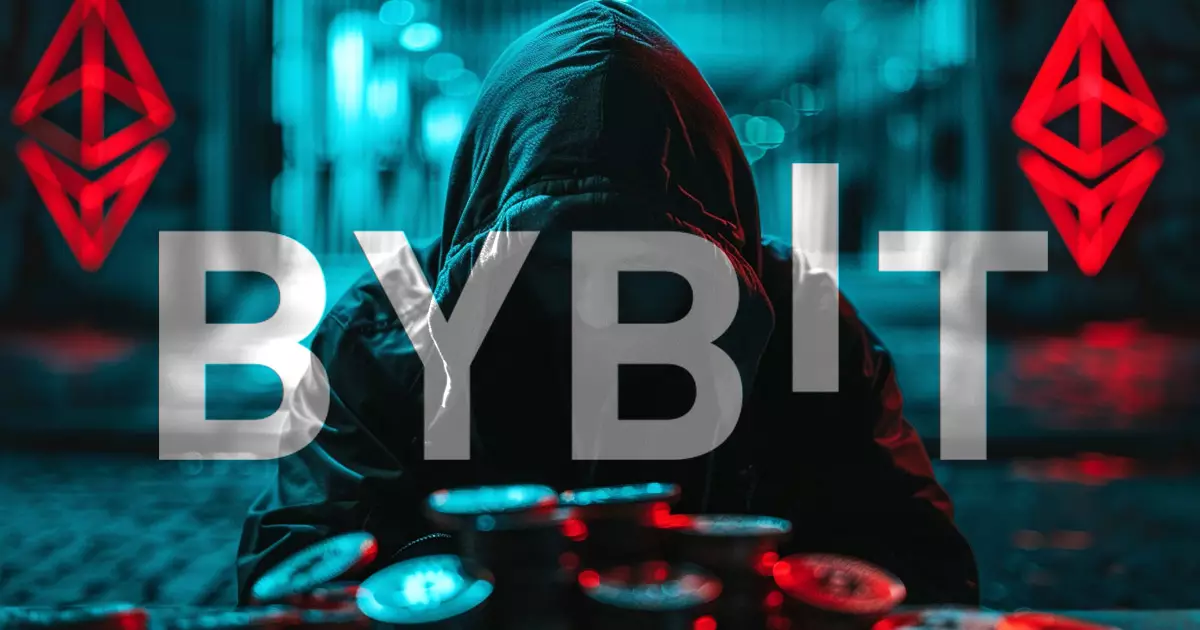In a stark revelation that has shaken the cryptocurrency community, Bybit disclosed that it fell victim to a staggering $1.4 billion hack. However, the exchange clarified that its own infrastructure remained intact, attributing the security breach to a vulnerability in a development environment related to a platform called Safe. This incident has raised critical discussions about security practices in the rapidly evolving world of decentralized finance (DeFi) and the necessity for robust protective measures in the blockchain space.
The forensic analysis initiated by Bybit, alongside blockchain security experts from firms like Sygnia and Verichains, unearthed the intricate details of how the attack transpired. The hackers exploited a weakness within Safe’s Amazon Web Services (AWS) S3 bucket. This access enabled malicious actors to manipulate transactional elements through a compromised developer machine. A separate report from Safe corroborated these findings, indicating that the breach involved a cleverly disguised malicious transaction proposal designed to inject harmful JavaScript into key resources.
These sophisticated cybercriminals inserted code that altered the transaction content during its signing process, thereby compromising the integrity of the intended execution. The assault was not random; it appeared to be specifically targeted, as indicated by the analysis of the harmful JavaScript. Research pointed toward a concerning trend whereby the injected code could modify transactions associated with Bybit and an unidentified contract believed to be controlled by the attackers.
In the wake of the breach, Safe took swift action by updating its JavaScript resources hosted on its AWS infrastructure. This move intended to eliminate traces of the malicious code and restore functionality. Despite these efforts, forensic teams succeeded in tracing the attack methods back to the notorious North Korean hacker group, Lazarus, known for its complex and state-sponsored cyber operations. This revelation stirred fear within the industry, pointing to a broader vulnerability that could affect others utilizing Safe’s multi-signature services.
Yu Xian, the founder of SlowMist, raised pertinent questions about the attack’s implications. He highlighted the notion that the exploit could potentially threaten any user-interactive service containing front-end components, emphasizing that this incident is a classic example of a supply chain attack. The call to action for an overhaul in security management for substantial assets could not be clearer.
One of the pivotal aspects of this incident revolved around the concept of Subresource Integrity (SRI), a security feature designed to authenticate external resources. Xian pointed out that implementing SRI could have likely thwarted the attack, stating that neglecting this seemingly minor detail had significant consequences. SRI relies on cryptographic hashes to ensure that resources called by a website have not been tampered with, illustrating a critical need for developers to incorporate comprehensive checks in their deployment protocols.
Following the breach, Safe undertook extensive measures to rebuild and reconfigure its infrastructure, ensuring a fortified defense against future security threats. By rotating all credentials and restoring operations on the Ethereum mainnet, the platform aimed to instill confidence among its user base. Nonetheless, an advisory was issued urging heightened caution for users when executing transactions. Furthermore, Safe committed to spearheading a collaborative effort to enhance transaction verifiability across the sector, addressing overarching security, transparency, and self-custody challenges within the DeFi ecosystem.
Despite the assurances from both Safe and Bybit that the exchange’s core operations were not compromised, skepticism lingered within the community. Notable figures, including Hasu from Flashbots, emphasized the need for accountability on Bybit’s part. They argued that the incident underscored a glaring deficiency in Bybit’s infrastructure to adequately respond to what was considered a “simple hack.”
The mantra echoed by Jameson Lopp, co-founder and chief security officer at Casa, called for immediate changes in protocol regarding developer access to production keys. Lopp advocated for stringent peer-review processes and increased oversight in production code deployments, stating that reliance solely on trust within single personnel to manage critical updates posed an enormous risk. Mudit Gupta, chief information security officer at Polygon Labs, mirrored this sentiment by questioning the control and monitoring of changes made in the production environment.
The $1.4 billion hack serves as a stark reminder of the perils that accompany the burgeoning landscape of digital finance. As DeFi continues to evolve, the community must advocate for more stringent security protocols and remain vigilant against emerging threats. The lessons learned from the Safe incident present both an opportunity and an obligation for all stakeholders in the blockchain ecosystem to foster a culture of accountability and innovation in security practices, thereby ensuring a safer environment for all users.














Leave a Reply